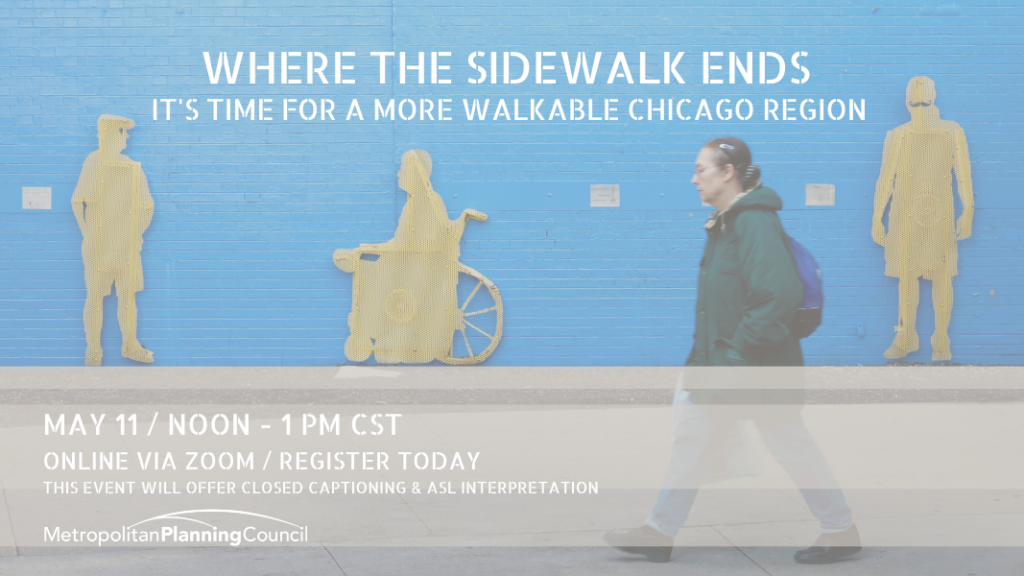Where the Sidewalk Ends

Regardless of what mode you use, every trip you take begins and ends with walking or rolling. Whether it’s going just a few feet to get in a car or trekking a half-mile to the nearest ‘L’ station, the pedestrian is the most essential user of the transportation system. However, pedestrian infrastructure often feels like an afterthought in much of the region – like something local governments do out of obligation, rather than a genuine interest in improving walkability. Even a relative “walker’s paradise” like Chicago has major deficiencies in its sidewalk network and challenges for its diverse populations.
There has never been a better time for the region to make a commitment to improve walkability. The COVID-19 pandemic got many of us out on foot exploring our neighborhoods, enjoying socially distant commerce, and engaging in recreation. The pandemic and our region’s recovery will continue to challenge us to rethink how we use streets. What’s more, the social justice demonstrations of 2020 also remind us that investments have not been equitable. This is evident not just in the quality of sidewalks and curb ramps, but in the number of destinations within safe walkable distance as well. Finally, against this backdrop is the ever-present climate crisis. Improving walkability is a critical part of the toolkit to lower greenhouse gas emissions.
Watch MPC and panelists give a snapshot of the region’s pedestrian environment and hear from organizations who are actively working to make Chicagoland more accessible for all. In addition to highlighting some of the region’s change-agents, they’ll also share new research on how local governments can take concrete steps to improve walkability within their communities.
Speakers:
- Rachel Arfa, Commissioner, Mayor’s Office for People with Disabilities
- Leslé Honoré, Managing Director of Strategy and Communications, Center for Neighborhood Technology & Steering Committee Member, Elevated Chicago
- Vickie Jacobsen, Transportation Planner, Chicago Metropolitan Agency for Planning
Moderator:
- Jeremy Glover, Transportation Associate, Metropolitan Planning Council